I've tested many Dreame vacuums, some of which I've liked, some I haven't, and most of which I felt lukewarm about, but had never tested any from the Mova line, which is a sub-brand made by Dreame. Certainly the Mova P50 Pro Ultra feels and performs differently from any Dreame model I've tested, and is a fraction of the cost of similar Dreame vacuums.
In many ways, the P50 Pro Ultra feels like a premium vacuum, with a wealth of fine tuning available in the settings to deliver a custom experience; and some of the same tower features as higher end models, like self-dispensing detergent and deep cleaning of the spinning mop heads. However, the P50 Pro Ultra also has some issues that feel more in line with other less expensive models, including cheap-seeming hardware and cleaning modes that don't deliver all the time.
An attractive build with known hardware issues
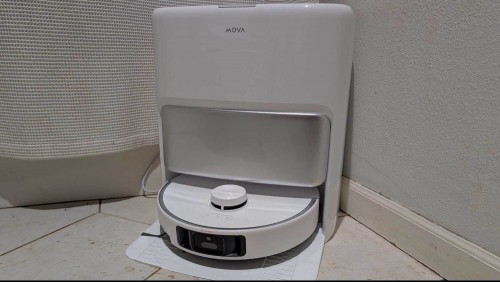
The P50 Pro Ultra reminds me of the Roborock Curv (a robot I generally liked). Budget and mid-range robots tend to have cheap-looking towers, with a lot of boxy-looking plastic. Lately, premium vacuums have become more presentable, with brushed metal and gold accents. The Roborock Curv is somewhere in the middle, with a modern, soft design that's attractive enough to live in the open of your house, but lacking the more expensive touches. Similarly, the P50 Pro Ultra has softened the edges of the traditional tower design, with some nice curves and matte textures, but is still made of cheaper plastic parts.
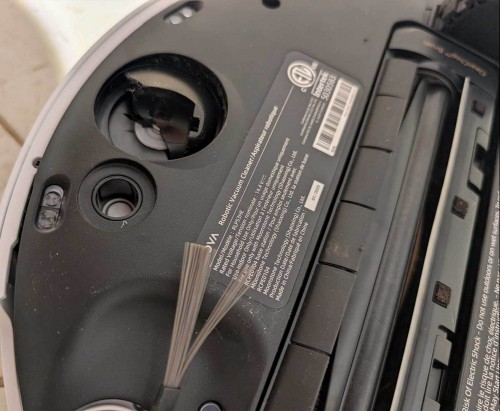
The Mova has a fairly well-known hardware bug: the front wheel is prone to cracking in half, often right out of the box. I became aware of this when my robot's wheel broke in the first week. I assumed it would be an easy replacement, but the wheel isn't available for purchase, and even with a hack-y workaround (buying a Dreame wheel off Aliexpress), the process to replace the wheel requires tearing the whole robot apart to install.
Mova support will reportedly send you a wheel replacement or swap the robot, but which resolution you receive seems to be inconsistent, and based on what support tech you reach on the given day. I received a new robot, and the replacement's wheel managed to stay intact for the remaining few weeks of testing. That said, if I were to purchase this model, I'd certainly opt for an extended warranty.
The app is packed with unique features, but isn't well organized
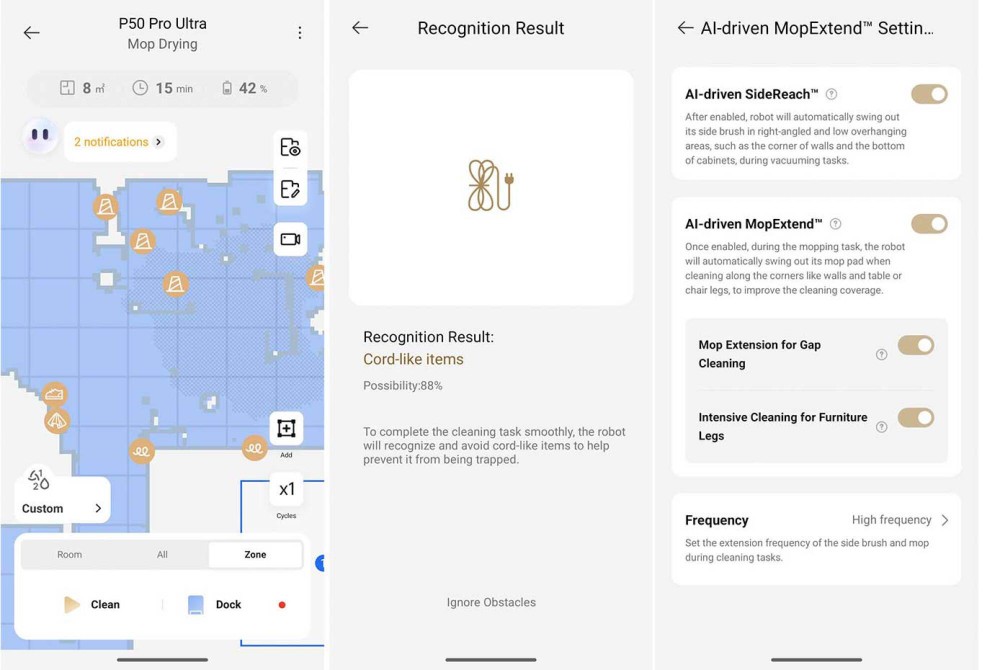
The Mova app has some cool features that I haven't seen yet in a robot app. Rooms, once mapped, are broken down into smaller segments based on the conditions of that area. When you set up the cleaning routine, you can change it for each micro area or condition, which I could see working well for complicated spaces like my living room. In fact, there is much to like about the settings for mopping and vacuuming, particularly how many more options the Mova offers than most robot vacuum apps.
The maps in the Mova app are more detailed than competing apps too. While other apps might mark the map where an obstacle lies, Mova gives you highly detailed information about obstacles, telling you if it is a cord or a toy or pet waste. You can click the item in the map to enable the robot to take a picture of the item and report back to you. These obstacles are reported to you as soon as a cleaning mode is over.
Unfortunately, the app isn't always easy to use. Premium features like a remote control are buried in the "other settings" sub panel, requiring you to dig for them. While I don't love the organization of the features in the Mova app, it is still a usable user interface that you will pick up over time. Still, the settings for the tower are only available when the robot is in the dock, and there are too many sub-panels in the settings. It would be nice if the settings were organized by robot or tower and then broken out into features.
Vacuum is impressive on open floor, but less so on edges
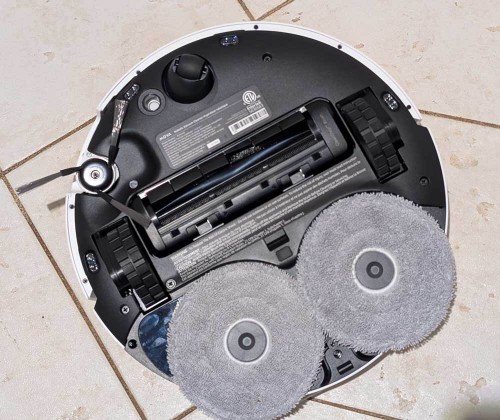
This model only has one sweep, located in the front right quadrant of the robot, but unlike the sweeps on Roborocks or Deebots, the sweep is large and all arms are in constant contact with the floor. The sweep can also swing out impressively far from the robot on an extending arm. Due to both factors, I expected the vacuum to work well. The sweep is highly effective at moving loose debris towards the rollers, but despite the extending arm, the sweep doesn't seem to reach as far as it could in most spaces. In some cases, the robot's LiDAR and cameras don't seem to recognize the need for the arm to reach into spaces to clean.
For instance, along my kitchen wall are many places the sweep should be able to slide under, like my oven and refrigerator. The robot won't do it. But between the fridge and oven is a recessed toe kick, requiring the robot arm to stretch far less, and it had no trouble reaching into it. This inconsistency resulted in the dreaded "band" of dirt along walls and around objects on the floor.
The robot performs admirably on the middle of the floor. The Mova was undeterred by any size debris I threw at it, including puffs of dog toy fluff and a build-up of wood mulch by my back door (thanks, dog).
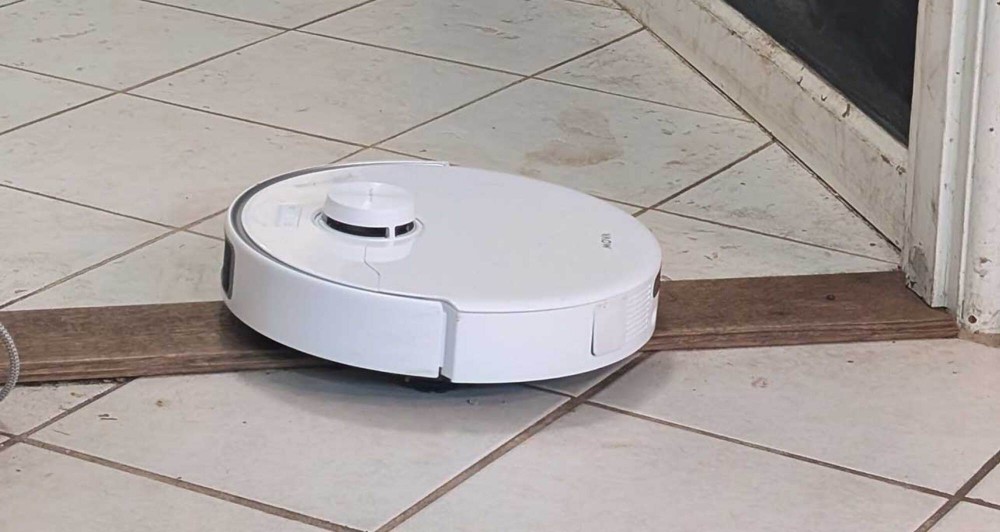
A singular roller on the bottom moves debris effectively into the path of the 19.000 Pa suction. While not the highest suction I've seen recently (that would be 22,000 Pa), it's quite close. The P50 Pro Ultra chassis is also impressive, sailing over thresholds that have given some premium models trouble. The robot even coasts along the threshold itself, ensuring it is vacuumed and mopped. I haven't seen that behavior in any other robot.
Near-silent running (until it isn't)
This is by far the quietest robot I've used. On anything but max settings, you could absolutely have a Zoom call in the same room as the robot is operating. Even on max, the noise is far quieter than other robots.
Unfortunately, that only applies until something gets caught in the rollers. If that happens, the robot is absurdly loud, as the object clangs around inside the roller chamber. This can be fixed in one of two ways: either by picking the robot up and clearing the object, or sending the robot back to the base to empty.
Despite the detritus challenges in my house during testing, the robot never got severely clogged. The tower effectively cleared it of all the debris and sent it back into service.
Dial-in cleaning settings like never before
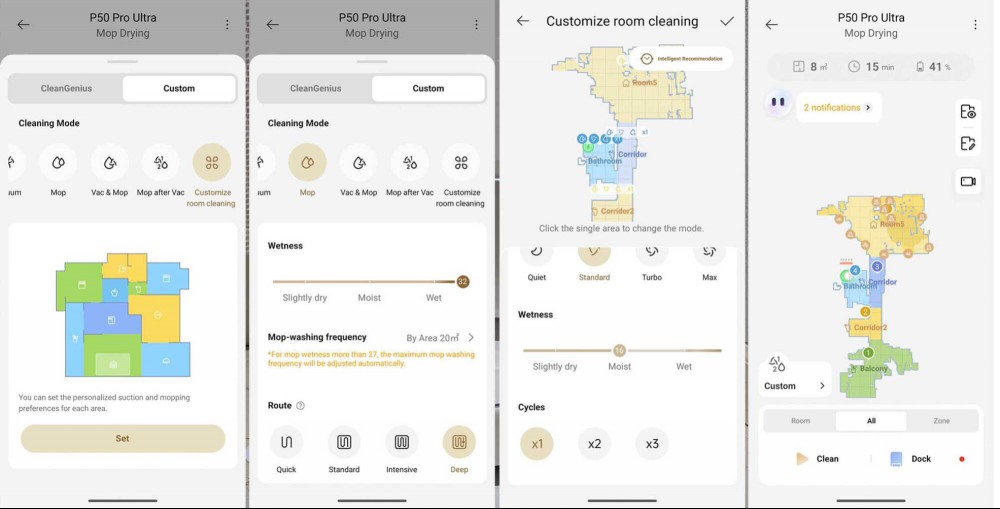
Most robots offer the same options for cleaning: You can vacuum, vacuum then mop, vacuum and mop at the same time, and sometimes, just mop (this is rarer). For both vacuuming and mopping, you can adjust the intensity of the clean, how much water is used, the route taken, and how many passes the robot makes on the floor.
The P50 goes much further: You can set the mop washing frequency, the wetness of the mop, have it run the wash up to three times, and fine tune the settings within a room.
Twin spinning mops have similar issues as the vacuum
Two spinning mop pads on magnetic disks live underneath the Mova P50 Pro Ultra, The mop pads can be peeled off the disks and washed, then placed back on the Velcro-like surface of the disks, but you should never need to clean them yourself. The tower will pull the mop disks off the robot when it docks and clean the mop pads with hot water. In fact, if your robot is only vacuuming, the robot will leave the disks at the tower and complete the run without them. Only if you're doing a mop run or a combo vacuum/mop run will it reattach the mop pads.
Like the sweeper, the mop pads are on extending arms, and it's impressive how far the arms extend out from the robot. However, the mop suffers from a similar problem as the vacuum: Though the mop pads can reach walls, and up against objects on the floor, they simply didn't have enough pressure to clean well. The mop performs competently on the open floor, but left that same band of dirt against walls and objects. It did this despite the mop having an "AI Mop Extend Settings" panel where I specifically set it to auto detect when the extension was needed, and asking it to use intensive cleaning for furniture legs.
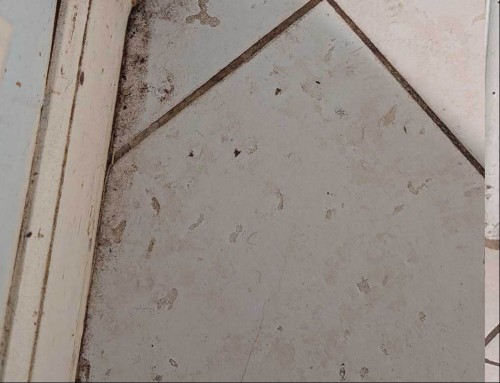
Throughout my testing, the mop did a fine job on surface dirt, but lacked any pressure on the mop pads. A raspberry had fallen on the floor in my kitchen, and there was a small red splotch on the white tile. Even on max settings, the mop could not get that stain off the floor—not even after six runs. (I got it off with one pass of a manual mop.) It seems this model doesn't have the hardware build to exert enough downward pressure on the robot to get a good clean.
Navigation troubles might be the reason for the robot's foibles
The familiar LiDAR tower (a light-measuring technology used to help navigate and map spaces) is present on top of the P50 Pro Ultra. Based on my experiences with other robots that are using AI and cameras to aid the LiDAR, I think leaning more on cameras would help this model get into tighter spaces with its extending arms. Cameras often help when the space is low to the ground, like under a stove, or under a low hanging plant—places where LiDAR seems to struggle. Future Movas will have internal LiDAR without the tower on top, and will get that AI assist, and I look forward to seeing how this affects their ability to get into tighter spaces with their extending arms.
The Mova P50 Pro Ultra is a robot vacuum I wanted to like. In particular, I love the amount of control it gives you over the cleaning settings. The robot is whisper-quiet and I was quite happy with the vacuum's performance on open floors, where it bested many more expensive devices. But the band of debris left along walls and floor objects is hard to ignore. In a similar vein, the mop lacks the downward pressure needed to lift simple stains, much less grime or dried on dirt. While that's a common robot vacuum problem, the mop also failed almost completely on the edges of the room.
Often, problems with robot vacuums can be resolved via software updates, but in this case, I don't believe that can improve the situation much. These are hardware issues, particularly the front wheel. For that reason, I believe there are better options in this price range. At $1,299 (though it can often be found on sale for well under $1,000) you could grab a number of robots that will have more consistent overall performance. In particular, I'd consider the Roborock Curv, which is currently on sale.
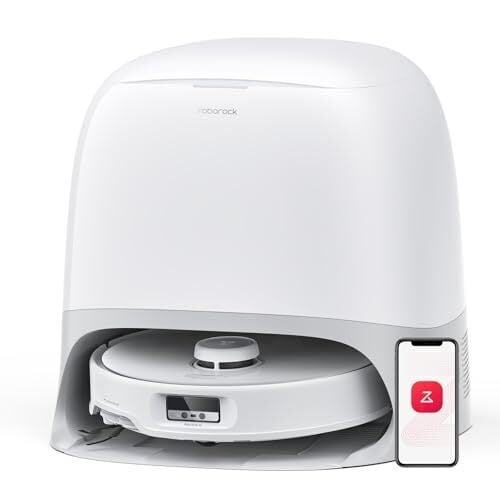

Freelancers cover news, tech, and entertainment for Lifehacker.
